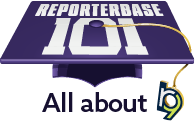Lesson #38
Inquiry – Invoice Inquiry function
Search for posted invoices using a variety of criteria, such as invoice number, type, amount(s) and/or date(s). Find invoices for a particular job, location, case, claim number and/or client matter number. Limit your search to open or paid invoices. Send original or current invoices to clients. Export or print the results as a report. Get detailed information about the invoices including payment history.
Quickest way to find invoices
Invoice Inquiry will usually be the best function for finding invoices when you don’t have the invoice number because it has the most search filters. You can search for all open invoices or invoices that match any one or combination of these filters:
- Invoice number
- Invoice date, job date, or invoice-posted date
- Date range
- Job number
- Open invoices, paid invoices, or both
- Case
- Claim number
- Client matter number
- Invoice total $ amount range
- Client’s reference number
- Resource’s reference number
- Type of invoice — such as its source, purpose, or function
- Job location city and/or state
- Business units
Invoice Inquiry lists posted invoices based on your set of search criteria as an exportable/printable report. The report includes information from the search categories as well as the amount outstanding, void date, Bill To client, and Sold To client so you can see most information about an invoice at a glance.
Invoice Inquiry displays an invoice’s original amount plus 2 current balance amounts:
- The outstanding amount of the original invoice minus any payments appears in the Balance column.
- The current balance for the invoice including all fees added since the original invoice was issued — such as late charges and finance charges — and minus any payments already made appears in the Balance+ column.
The report also includes a Totals line. You can export the grid as an Excel spreadsheet or a CSV(comma-separated values) file to save, print, share, or use in other applications.
Customize how you view posted invoice lists
The grid in which you view posted invoices is customizable to your individual preference:
- Re-arrange the columns so the most important information is most prominent.
- Stick up to 10 columns to the left side of the grid so they do not scroll when you have a results grid wider than your screen.
- Stretch/shrink columns to fit the results.
- Hide columns you don’t need to see.
- Choose which column(s) to sort results by.
- If you select more than one column, choose in what column order to sort the list.
- Choose whether to sort info by ascending or descending order in each selected column.
- Save your custom grid as your default.
You can save your custom grid as your default. Your customizations do not affect other users, and you can restore the original RB grid layout anytime.
View, re-send, & edit any invoice listed
You can view, send, and update individual invoices listed. For example if you didn’t get a party’s e-billing information until you posted the invoice, you can enter it here. You can see information about the witness, service items, and billed amounts. Plus you can see what the resource was paid and when. You can also view an invoice’s detailed receivables transactions — including late fees, finance charges, and credit card processing fees — as well as download the invoice from the repository and read the invoice’s Notes Log.
You can email or print out the invoice you are viewing. You can choose the original or the current invoice that includes any finance or late charges added since the invoice was originally issued. If emailing you can include other attachments from your desktop or RB’s Witness-level Repository plus edit the email contents before sending. If you choose the print option, you can preview the invoice with details on or off, export the invoice in a variety of formats plus search for a word or phrase in the onscreen invoice. RB will highlight all instances of your searched word/phrase in the invoice and list them in a scroll box along with the page number where they occur.
NOTE: Because COD invoices are different from regular invoices and cannot be posted until paid, they are not included in Invoice Inquiry searches. To find COD invoices, use Billing > COD Invoices.
TL;DR: Search for posted invoices using a wide variety of criteria. Export or print your results as a report. Get detailed information about the invoices including payment history.
RB concepts in this lesson
Bill To client: Client responsible for paying the invoice for a job.
Business Unit (BU): One of your company’s revenue centers or any entity in your business that you want to track separately.
Job: Usually the reporting of a deposition but can also be any kind of service you provide with your reporters or other resources. More >
Notes Log: Un-editable internal-use only notes entered either by a user or automatically by RB appear in a chronological log.
Repository: RB has 9 repositories where you store files for safekeeping and quick retrieval, including a dedicated invoice repository.
Resource: Person or thing that provides your business with a service.
Sold To client: Client responsible for a job with your company.

